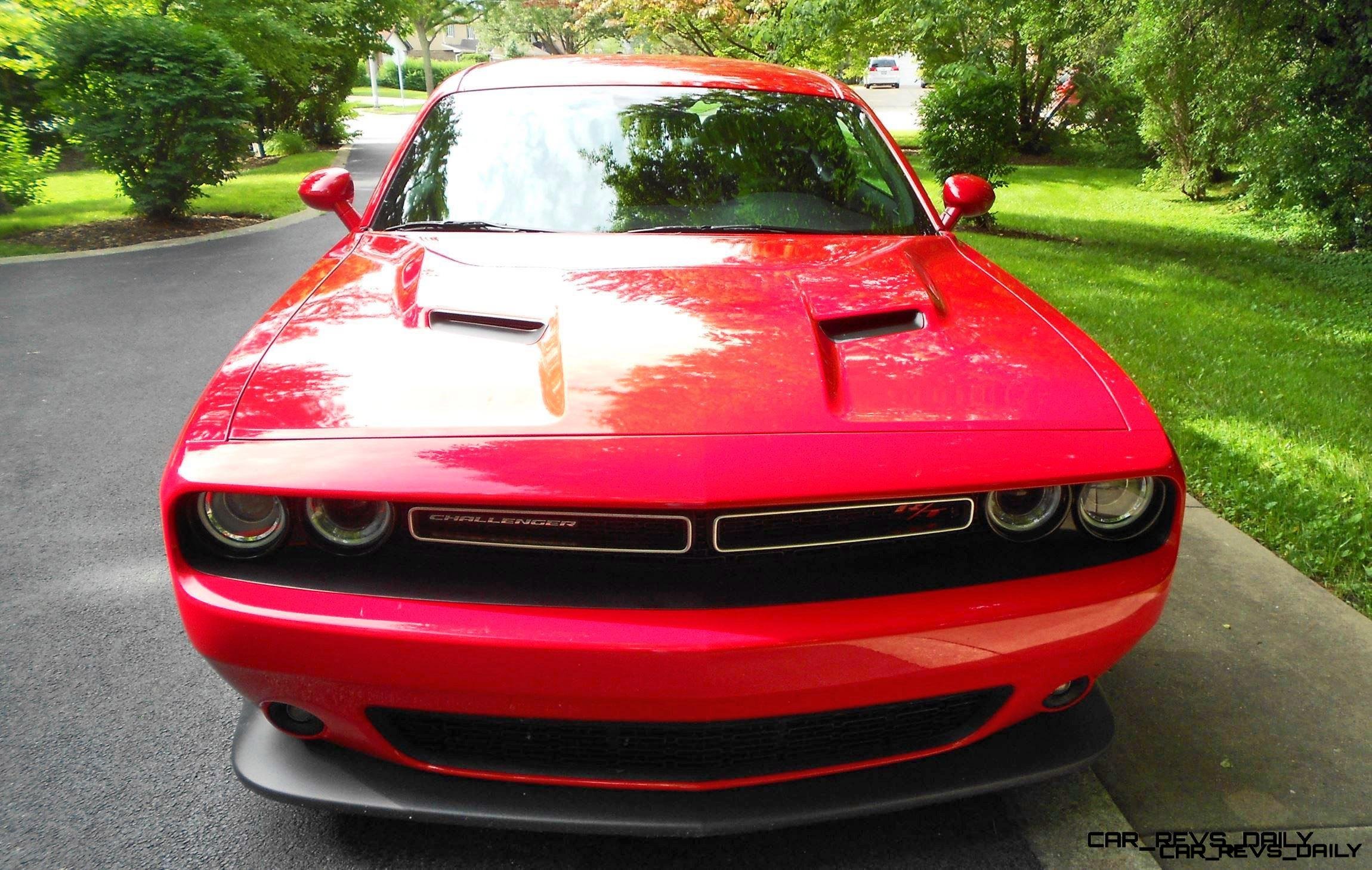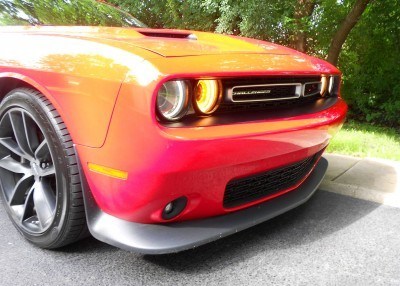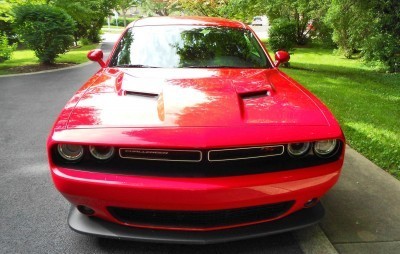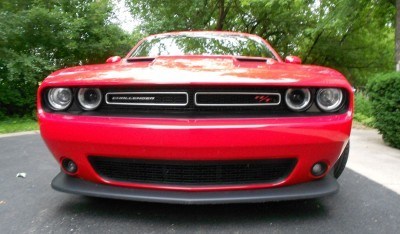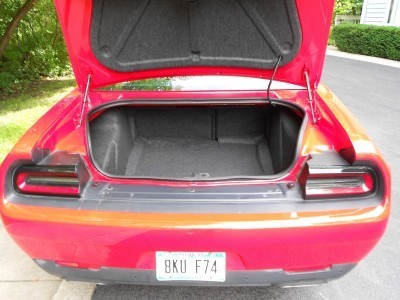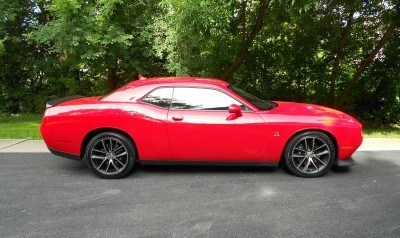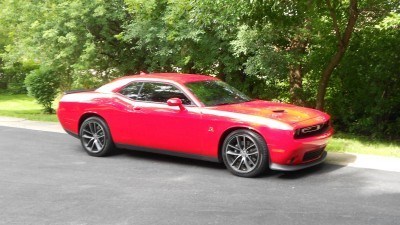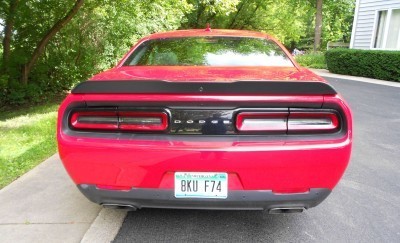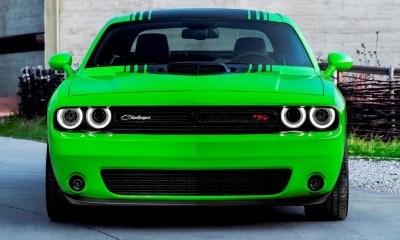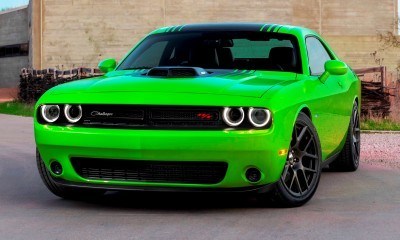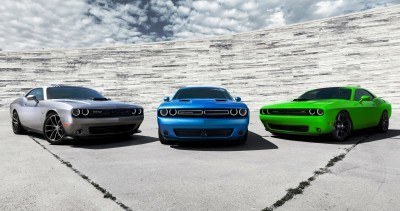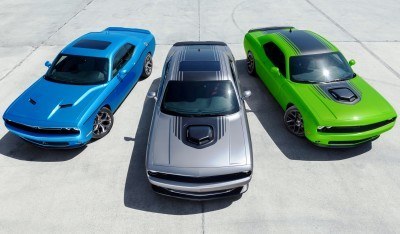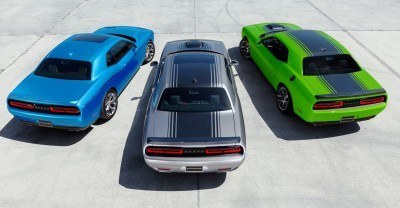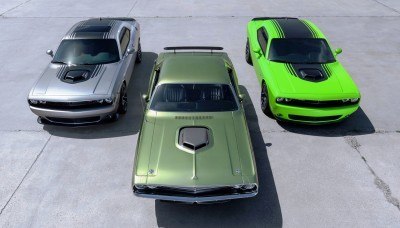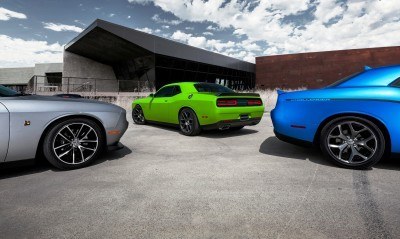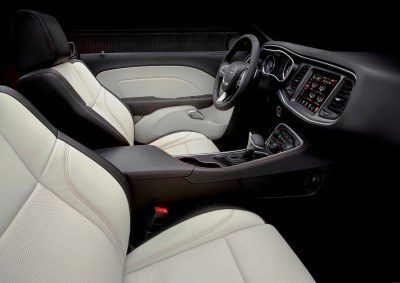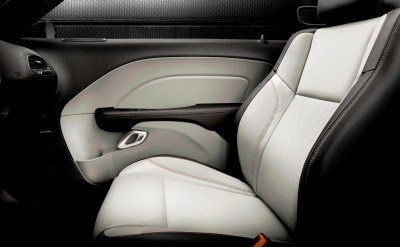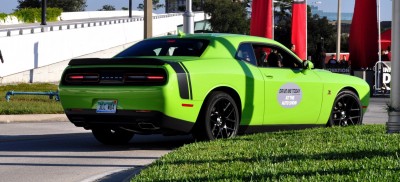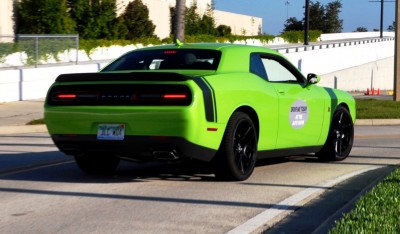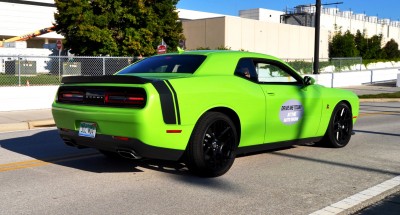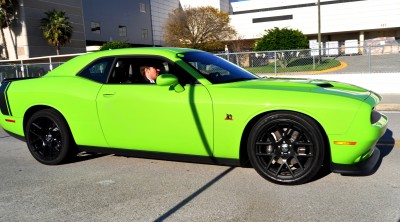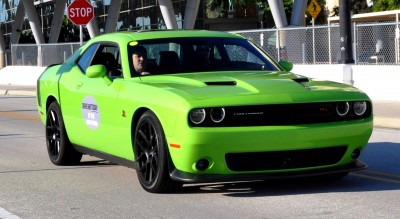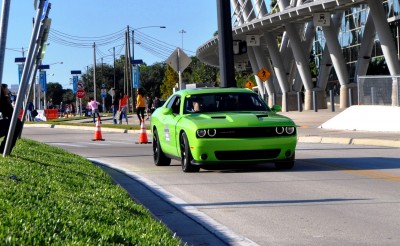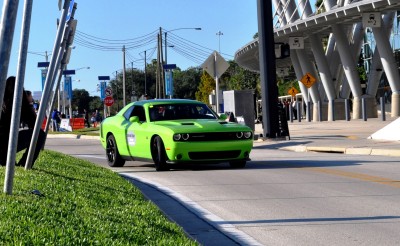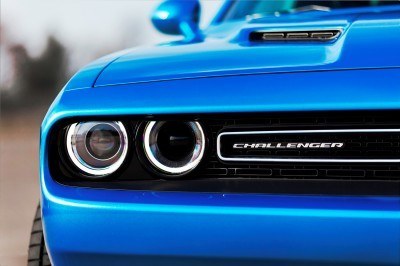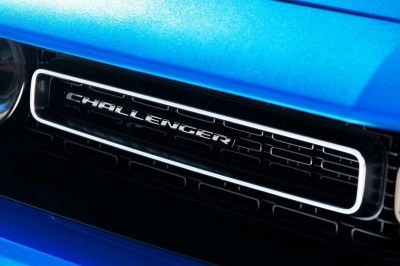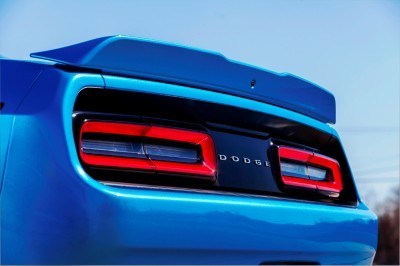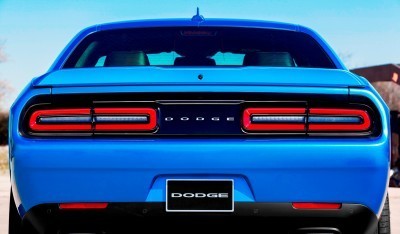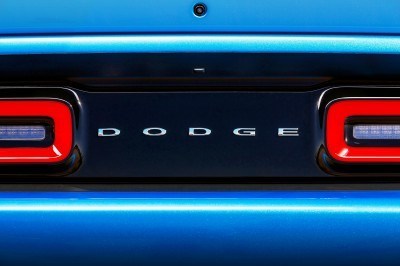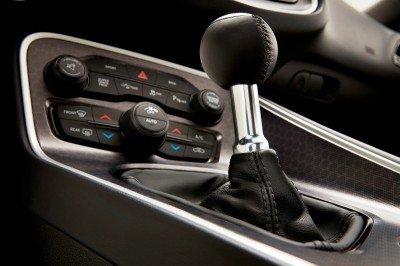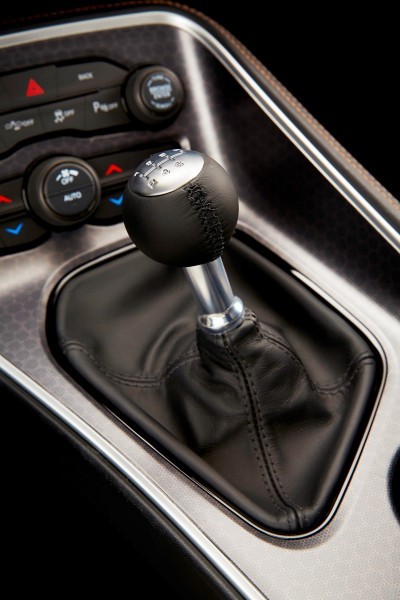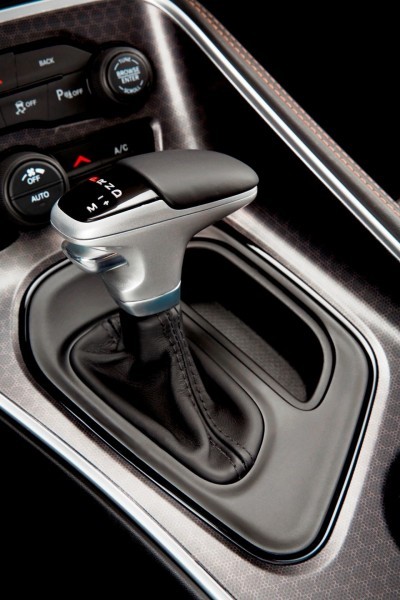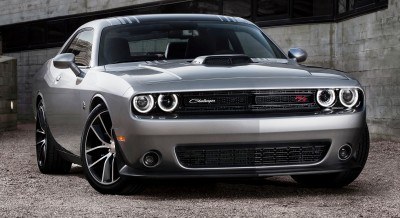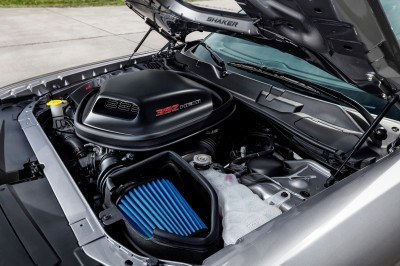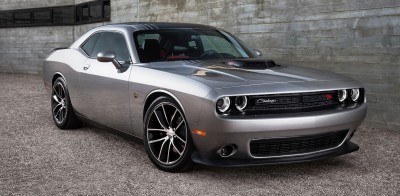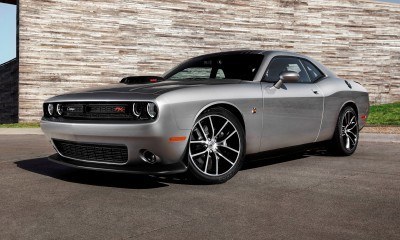2015 Dodge Challenger RT Scat Pack Review
By Ken “Hawkeye” Glassman
The Dodge Challenger RT Scat Pack is an outstanding car.
It competes with the Mustang and Camaro in the marketplace, but in my mind, it stands apart on a few points. They’re all retro sport cars, but while the Mustang and Camaro are much porkier than their 60’s and 70’s versions, the Challenger seems to be a much more svelte looking and feeling car. Both the Ford and Chevy cars can be equipped with powerful engines, but the Challenger is a bit more boisterous and raucous. The driver gets a more visceral experience in the Dodge than with the others. Chrysler builds that feeling into their cars, and takes pleasure in the result. It’s a driver’s car, that begs to be driven hard, and the driver is rewarded with a unique motoring experience. And there are precious few cars in this price range that can boast of that.
Stomp on the gas pedal, and the 6.4 liter Hemi V-8 unleashes the 485 hp, immediately thrusting the driver’s shoulders into the nicely bolstered sport seats, and raises the heartbeat as quickly as it raises the rpm’s. The 475 ft. lbs. of torque peaks out at 4,200 rpm, so there is plenty available to light up the tires and rip the while lines off the pavement from a stoplight. Zero to 60 in less than 5 seconds, and the quarter mile in just over 12. That ain’t bad for an old-school, pushrod engine with a cast-iron block and just two valves per cylinder. And while the relatively high compression ratio of 10.9:1, requires premium fuel, the cost of the gas is a lot less than the cost of Plutonium, which is what you’d think it requires to achieve all that muscle. And the sound blasting out of the dual chrome exhaust tips is music to the ears of anyone old enough to remember the Challengers of the 60’s. It’s like aural Viagra.
But having said all that, the engine still feels as refined as modern overhead cam, 4-valve per cylinder V-8’s, which are getting harder to find in cars every year. And it also will deliver Highway gas mileage of 25mpg. I got 29 mpg traveling at a steady 70 mph on a long highway stretch, which is only a few miles per gallon short of my 2-liter Nissan Sentra. The engine shuts down 4 of the 8 cylinders on the highway to achieve those numbers, but if you need to make a pass, the engine lights up immediate when you depress the gas pedal, and the transition is seamless.
Pure straight line speed might have been all that was necessary to make the 1960’s and early 70’s versions of the Challenger an object of lust by young drivers of the time, but this modern day version also handles like a champ. We had the opportunity to drive it on the long road course at Road America, and also on a shorter more technical road course at the Autobahn race track in Joliet, IL. And it showed its handling chops on both tracks. It felt like we were driving a Can Am race car from the past, except of course, this version had air conditioning, and an 8-speed automatic transmission, and power steering. You may, however, order one with a stout 6-speed manual, if you want to row through the gears and do the dance with a proper clutch pedal. But even on the race track, the 8-speed automatic shifts quickly and precisely, only a professional race driver can work a manual better.
Huge high performance 4-piston Brembo brakes, and meaty 20” tires and wheels means you can drive deep into a corner, stomp on the binders, and quickly turn it in and point it to the apex. Once there you gently roll on the power as you let it run wide out the turn, and launch it towards the next corner. It feels light and athletic, like it’s on rails, and remains composed giving the driver all the assurance needed to blast on. You can call up the Super Track Pack screen on the dash to set launch controls, a g-force screen, and other settings to track your driving performance. I got it up to .85 G’s, but there is much more grip to be had. You don’t want to be the guy at a press event who wadded up the merchandise in a tire barrier. And I saw 135 mph going down the long straight at Road America, and it might have been a bit more, but I had my eyes on the brake markers going into the sharp tight left-hander at turn 5, and wanted to make sure the Challenger was slowed down enough to make it. The speedometer goes up to 180, and I’m pretty sure a better driver could have gotten a lot closer to that number.
You may be thinking that most buyers will never get to experience the Challenger on a race track, and who wants a race car to drive every day on the street? Well, that’s the beauty of this car. Driving in suburban and highway traffic for a week was a revelation. It can be a docile as a commuter car when you don’t have your Ronny Racer hat on, and just want to get to work. Yes, the ride quality is firm, but not at all punishing. And when you’re tooling around at 30 to 40 miles per hour, the exhaust note is muted. The cabin is very quiet on the highway and the ride is comfortable. So you can drive Grandma to church in this Challenger, and she wouldn’t even know she was in a car with that much performance.
The interior has been upgraded for 2015, and the materials are excellent. The test car had very comfortable and rich feeling power operated cloth seats. The dash is nicely laid out and all controls are easy to work. The Nav system is easy to operate, through the touch screen, as are the other infotainment systems in the car. For my money, Chrysler has the best interface with all the electronics through the touch screen, and even the voice recognition is much better than most.
It’s a bit of a chore to get into the back seats, but once there, passengers will be comfortable, and thanks to the front seats leaving room to place your feet underneath them, there is a surprising amount of leg room comfort. The Challenger has a high beltline, and short windows and windshield, limiting vision a bit, but it’s not nearly as claustrophobic as one feels in the Camaro.
I think the exterior styling is brilliant. It’s a purposeful appearance from the front fascia that looks like a NASCAR splitter, and the dark upper grill housing the 4 round headlamps, to the scoops on top of the hood. There is a nice upswept character line running from the front fender to the rear. The horizontal tail lights surrounded with black trim look sinister, and the car just has an impressive stance.
The test car had a base price of $37,495. The Scat Pack Package upgrading to the 6.4 Hemi, ( from the standard Challenger R/T’s 5.7 liter Hemi which adds 113 more horsepower and 65 more ft. lbs. of torque) and the 8-speed automatic, cost a mere $1,400. And the U-connect upgraded radio and Nav system cost only $695. Add on the shipping charges, and the bottom line came to $40,585. That is a lot of performance in an already excellent car for that price.
If you must have bragging rights, you can upgrade to the monster Challenger Hellcat model, with 707 horsepower, but you’ll also have to open up your wallet for another 30-grand. But does anyone really need more juice than the Scat Pack? Still, it’s nice to know that Dodge is still making cars like these.
Ah, there’s nothing like good old American Iron.
By Ken “Hawkeye” Glassman
2015 Dodge Challenger R/T

Ken “Hawkeye” Glassman has been a motor journalist for over 30 years, reviewing automobile, as well as motorcycle ride reviews and accessory reviews.
His car articles have appeared in Robb Report Magazine, Autoguide.com, Car-Revs-Daily.com and other media. His work has also appeared in Road Bike Magazine, Motorcycle Tour and Cruiser, SpeedTV.com, MotorcycleUSA.com and others.
As motorcycle columnist for The Daily Herald in suburban Chicago, the paper became the only major circulation newspaper in the country to have a separate weekly section devoted to motorcycles. Later he wrote a weekly column for Cyclefocus Magazine.

